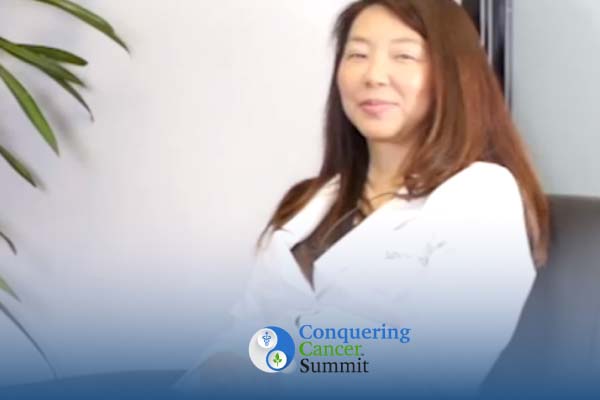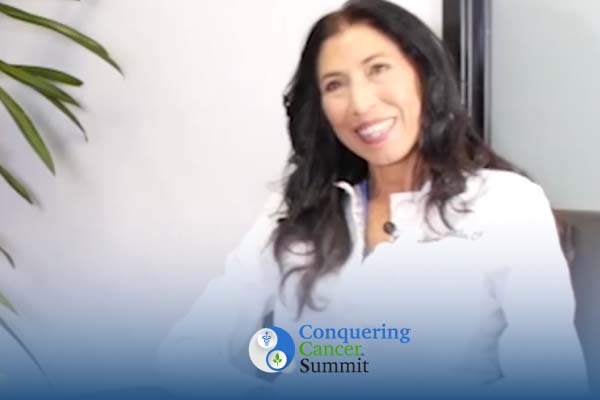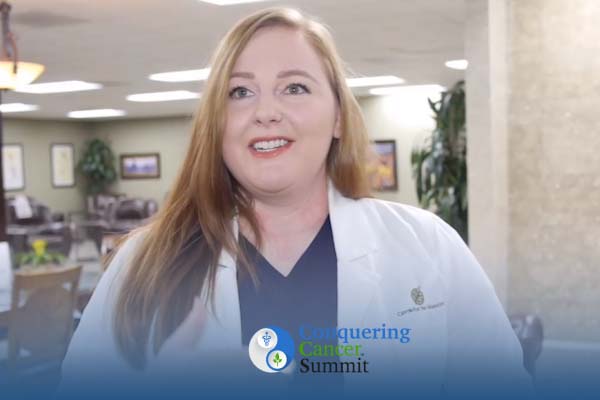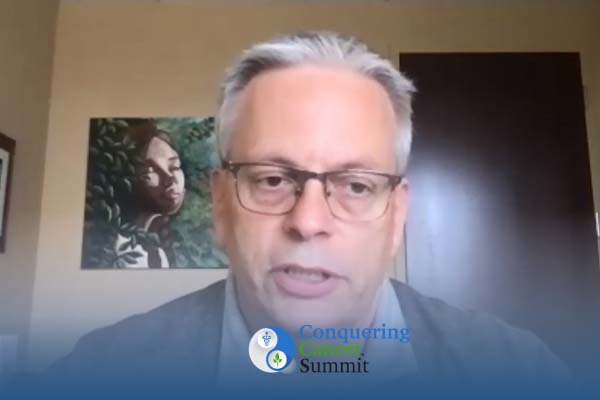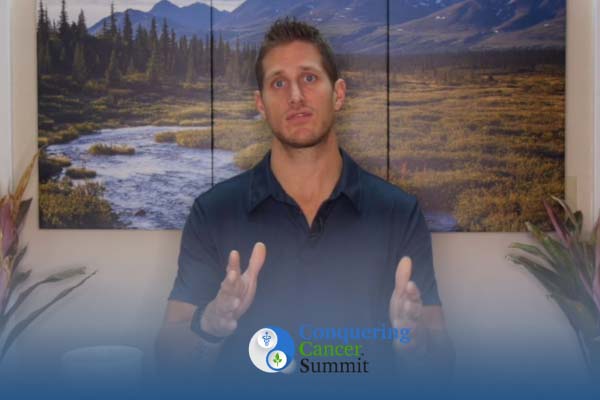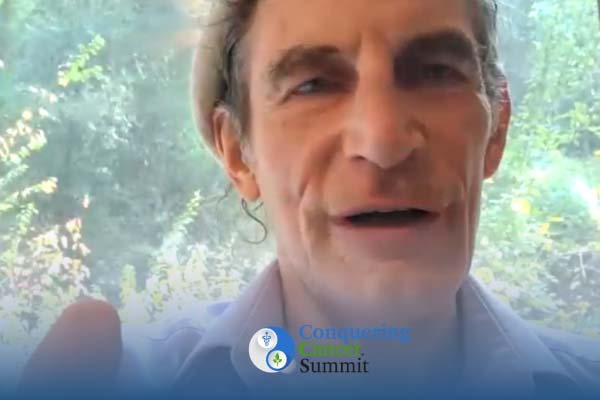Join the discussion below
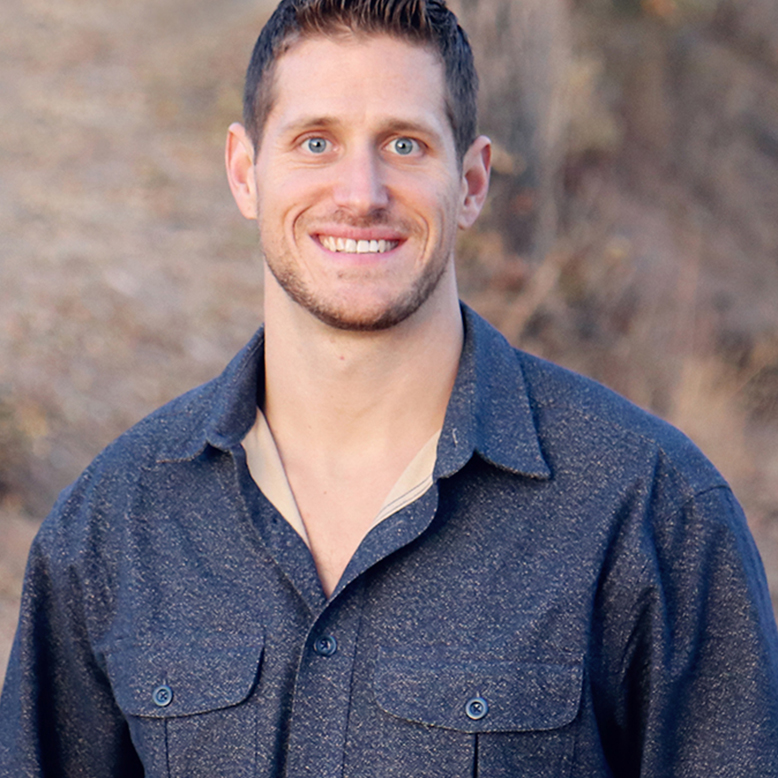
Nathan Crane is an award-winning author, inspirational speaker, plant-based athlete, event producer and 18x award-winning documentary filmmaker. Nathan is the Founder of The Panacea Community, Creator of the Global Cancer Symposium, and Director and Producer of the documentary film, Cancer; The Integrative Perspective. He is also the Director of Strategic... Read More
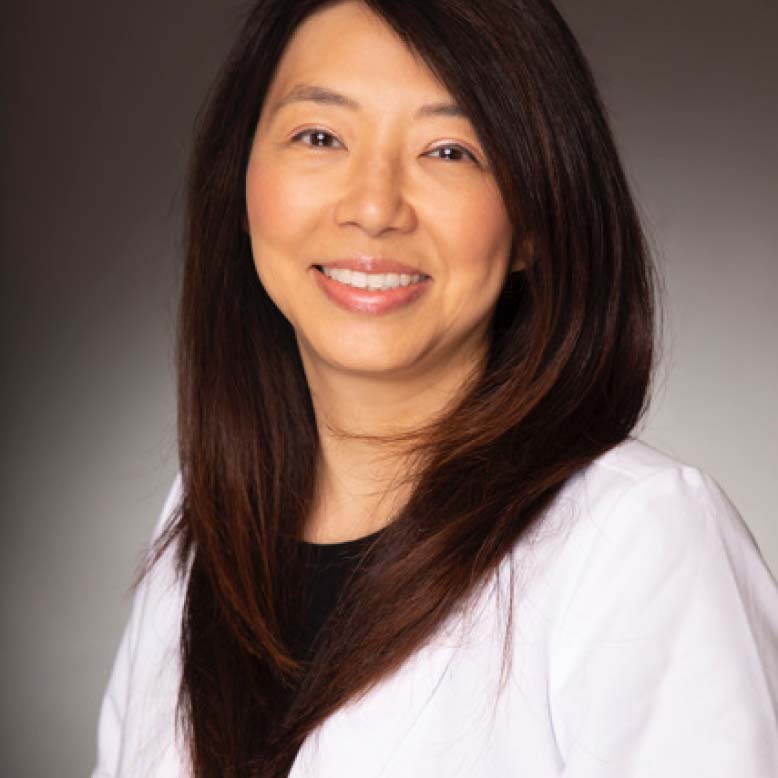
Dr. Suzanne Kim, MD graduated from Hahnemann University in Philadelphia, PA in 1997 and completed a residency in family practice at White Memorial Medical Center in Los Angeles, California in 2000. Her passion has always been cancer care, as well as preventive care and being an advocate for her patients... Read More
Dr. Kim has further honed her skills and training in the prevention and treatment of cancer under the tutelage of Leigh Erin Connealy, M.D. at the Cancer Center for Healing. She a leading expert in Insulin Potentiation Therapy (IPT) along with many other IV therapies. In addition, she is a physician consultant for oncoblot laboratory testing and 23 and me genetic testing.
Related Topics
Cancer, Chronic Illness, Homeopathic Medications, Homeopathy, Homeopathy Course, Insulin Potentiation Therapy, Metagenics, Microscopic Dose, Nutritional Medicine, Plant Therapeutic, Plant-based Diet, Prevention, Processed Foods, Relief From Symptoms, Side Effects, Sugar Pill, Whole FoodsNathan Crane
Hey it’s Nathan Crane, Director of the Health and Healing Club and Host of the Conquering Cancer Summit and today I am honored and excited to welcome you to a very special interview. Today, we are joined by Dr. Suzanne Kim, who is a medical doctor, who is one of the senior physicians here at the Cancer Center for Healing. She has a primary focus in IPT, insulin potentiation therapy, which is the low-dose chemo.
We’re gonna talk about what it is, why they do it, how it’s effective, any concerns you might have, anything you wanted to know about IPT, which is actually quite fascinating as a treatment protocol for anybody dealing with cancer. So stick around with us for that. And, Dr. Kim, thank you so much for joining us. And, you know, you have a fascinating background and kind of history you were sharing with me a moment ago, about what not only got you into medicine, but, you know, how you started your career and then how you transitioned to an integrative doctor. And why don’t you share with us a little bit about that.
Suzanne Kim, M.D.
Well, first I just wanna thank you, Nathan, for having me today. It’s a pleasure to be here. So I have been practicing for 20 years now and I am board certified in family practice. And I first got into medicine because I had a passion for prevention, preventing disease and make sure that patients are healthy. And so for the first 10 years, when I was practicing, I felt that you do all the things for prevention to help people, but there’s a lot of patients that were coming in that were chronically sick, chronically ill. And I was finding that there are patients that I wasn’t able to help. So after about 10 years, I started to feel a little burned out ’cause I wasn’t feeling that I was really making the difference that I wanted to in people’s lives, and really, for example, preventing cancer or preventing some of these illnesses that patients were getting.
Nathan Crane
So you’re a family physician, and what were a lot of the kind of common illnesses that you were seeing in people?
Suzanne Kim, M.D.
Well, I was treating the bread and butter types of issues, like hypertension, diabetes, and trying to prevent cardiovascular disease. I saw cancer patients as well. So, you know, as a primary care, you’re the liaison, and you kind of have that big picture. So I would send patients out to specialists when they needed to see what is going on. You know, a lot of patients say they have allergies, send them to the allergist. They come back and, you know, they said, “Oh, well, the allergist said I don’t have any allergies.” They were tested, so, you know, they would have rashes and things. So I was getting a little frustrated. And these patients were frustrated and they were seeking alternative care or seeking out their own treatments from various sources.
Nathan Crane
‘Cause they weren’t getting better, even though you’re sending them to all kinds of specialists.
Suzanne Kim, M.D.
Exactly, and I could understand why they would do that. And I, you know, had sent them to all the specialists. So I listened to them. I just listened to them. I monitored them. They would still wanna see me, even though I felt like I wasn’t helping them. But they would just come in and say, “Well, this is what I’m doing now, what do you think?” And I said, well, I would try to research and look up what they were doing and make sure that they weren’t hurting themselves with any of the treatments that they were trying out. A lot of patients were doing acupuncture. And at that time, acupuncture was a little controversial at that point as well. Now it’s much, you know, well accepted.
Nathan Crane
Right, very well understood scientifically.
Suzanne Kim, M.D.
And it’s understood, at that time it wasn’t. But a lot of people did see results from acupuncture, so I felt comfortable, although, I didn’t understand how it worked.
Nathan Crane
Did you dissuade them from using alternative treatments? Or did you just kind of, you wanted to learn more about it yourself?
Suzanne Kim, M.D.
I did not dissuade them. I was very open. Because I think that when you are suffering, and when you’re having pain, or whatever you’re having, you know, you’re looking for a solution. And I would do the same thing. In fact, for me, I did have some of my own health issues as well, which I wasn’t getting any relief from traditional medicine that was recommended to me. So, luckily, I stumbled on some alternative therapies, which I’ll talk to you about, which kind of started to lead me down a different path.
But I would listen to these patients. They would come in and I would try to research some of the things that they were doing. I wanted to make sure that they were not overdosing on supplements. A lot of them were taking enormous amounts of supplements. And, you know, I was a bit concerned about those dosages and I just wanted to make sure they didn’t hurt themselves, because they’re asking me for advice. But they were getting relief. And I was, you know, just taking note of what they were doing, and, you know, what worked, what seemed to work, what didn’t work. So I just was kind of observing, but I really didn’t have a lot of input for them at that point.
Nathan Crane
Well, you were being more of what we might call the “Doctor of the Future.” As I’ve interviewed Dr. Connealy before, actually for my documentary, I have a short snippet of her on our website, called “The Doctor Of The Future.” And that’s exactly… You know, unfortunately, so many people don’t have primary care physicians, like you, with such an open-mind, kind of a scientific mind, more of observing, you know, without putting in your own, “Well, you shouldn’t do natural medicine because they told us, you know, that doesn’t work.
So don’t do that.” Instead of that, you were open, you were observing, you were wanting to help, you were, you know, learning yourself. Like that is the mind, I believe, of the “Doctor of the Future,” right? It’s how all doctors, if they want to really help their patients, should be. And, unfortunately, so many people don’t have that experience with their doctors, they have the opposite. They say, “Oh, I’m using this alternative medicine, or I’m using these natural supplements, or these herbs or whatever.” And they’re told don’t do that, you know? So it’s actually refreshing to hear you, you know, being so open to really wanting to find the best results for your patients, it’s beautiful, yeah.
Suzanne Kim, M.D.
Right, so the first thing that when I was working in a practice with some other physicians, we started to do some nutritional medicine, bringing in nutritionists. And I started to see some really amazing results with nutrition. I got very excited about that because, you know, if we can avoid using medicines, I think that’s better, ’cause there’s a lot of side-effects with medicines. So we saw just, you know, I mean, we’d always had known that with certain conditions, diabetes, you know, diabetic diet, but this was using it to help with overall any patient really, for weight loss. And I see patients getting better with all of their conditions.
Nathan Crane
What were some of the primary principles of that nutritional plan that you were implementing?
Suzanne Kim, M.D.
At the time we were actually using Metagenics, ’cause I think that they had come out with a whole plan, and they had some nutritionists or dieticians that had a plan in place. And so they were, they had a very specific plan where they were, you know, low sugar. Not the traditional pyramid food pyramid that I was taught. So they were using, it was, you know, low sugar. It was lots of vegetables and fruits. And it kind of I guess it was maybe more paleo now, as we know it.
Nathan Crane
More plant-based.
Suzanne Kim, M.D.
Plant-based, mhmm.
Nathan Crane
More just natural whole foods.
Suzanne Kim, M.D.
Whole foods, exactly. Avoiding all of the processed foods. And so with doing that, I saw some really interesting results and got excited. And then somehow the doctor I was working with, she found out about some homeopathic medications that we started to bring into the office. And I used them because, and I didn’t really know. I just, you know, there were simple, easy to use.
Nathan Crane
Safe, right.
Suzanne Kim, M.D.
Safe. So I would just say, “Well, if you’re interested, you can try this.” I really didn’t know how they worked. So patients, I found they were working well and I tried them on myself. And I was like, “Wow, it really works.” And I’m the type of person that gets the side effect of any medication, every side effect. I take, for example, if I took a pseudoephedrine, I would get the heart palpitations and I would be tired, but wired at the same time. And I would get all the side effects. So I, you know, so it was hard for me. So I’m very sensitive to medications and anything over-the-counter. And so when I took the homeopathic, I was like, “Wow, I don’t have any side effects, but I feel relief from my symptoms.” So that was interesting.
And so, and I saw patients say that it was helping them. So that got me really intrigued because I said, “I don’t know how this works, it works.” So that’s when I started, I signed up to take a course on homeopathy. And I think that really is where that set my trajectory, because it really blew my mind honestly. Because, you know, it kind of goes against everything that you’re taught.
Nathan Crane
Right.
Suzanne Kim, M.D.
Everything that you’re taught.
Nathan Crane
Right, I did an interview, and I encourage people to go watch it, with one of your colleagues here at the center, where we talk quite a bit about homeopathy and, you know, the fact that it’s basically a sugar pill with a microscopic dose of some kind of, you know, plant medicinal, plant therapeutic, right? And yet the results are extraordinary, what they’re seeing. It’s mind blowing, yeah.
Suzanne Kim, M.D.
Right. So I, you know, I went to this course and I was going with my colleague at the time. And I remember, the first day we went to this course, we, you know, what we were told is that, “You know, it’s been around, it works. We don’t really know,” at the time, they said, “we don’t really know how it works, but it’s been around and it’s been working.” And so
Nathan Crane
We don’t know how it works, but it works.
Suzanne Kim, M.D.
Which and now, you know, we understand how it works. But at that time
Nathan Crane
How does it work?
Suzanne Kim, M.D.
How does it work? So they found that, first of all, I don’t think they had instruments to be able to really verify that there was, you know, the smallest amount of whatever substance that they were using. So now they have instruments that can actually detect that there is, you know, the smallest amounts of the substance that’s being diluted, because you’re diluting a substance and you’ve got micro, you know, amounts of it in there.
Nathan Crane
You might take an herb or a combination of herbs or something, right? And they dilute it all the way down until it’s like microscopic.
Suzanne Kim, M.D.
Right, there’s like, you know, numbers that you’ll see. And that’s the dilution that you’ll see. So I think it was immeasurable at, you know, early on, because this was developed many, many years ago, and they had no way of knowing. But now we have the ability to see that. So actually, so the interesting thing I will say is that when I was taking this course it was all homeopaths and they didn’t really understand. They just understand their field of homeopathy.
Subsequent to homeopathy, I was introduced to kinesiology. And in the kinesiology, a lot of the chiropractors that, you know, do the the field of kinesiology. And they understood homeopathy and they explained homeopathy to me. So that was interesting because I realized, it seems that a lot of people have a little piece of the puzzle or a piece of the pie, but people don’t know what other people know in other fields. So I think that it was interesting to hear the kinesiologists say they understood homeopathy when the homeopaths say they didn’t. And so they were explaining the, you know, the energy of the substance, that vibrational energy.
So it kind of goes into what’s now known as energy medicine. And understanding, which goes in line with homeopathy’s law, the law of similars, which is that like treats like. So, you know, what I try to explain, a good analogy I explain to people is if you’ve got a tuning fork that’s vibrating a specific frequency and you bring another tuning fork of the same frequency, what happens if you bring them close to each other?
Nathan Crane
They start resonating at the same frequency.
Suzanne Kim, M.D.
No, they cancel each other out.
Nathan Crane
Oh, when they’re already vibrating at the same?
Suzanne Kim, M.D.
Right.
Nathan Crane
Yeah, then they cancel out.
Suzanne Kim, M.D.
They cancel out. So similarly in homeopathy when they say the law of similars, like treats like, then you take a substance and when you dilute it down, it will treat the same symptoms that that substance causes. For example, classic homeopathic medication that’s one of my favorites, Apis mellifica, is actually a whole crushed honeybee.
Nathan Crane
Okay.
Suzanne Kim, M.D.
And when you think about a bee, well, if you get a bee sting, what happens? You get swelling, pain, redness. So if you take homeopathic Apis mellifica, it actually treats those exact same symptoms. It’s the perfect antidote for a bee sting, but it’s treating symptoms, so it can also be used to treat anything else. For example, it can be used for any other reaction, like hives. You’ve got red, you know, big red bump, that’s hot, swollen, and improves with cool ice.
Nathan Crane
Wow.
Suzanne Kim, M.D.
Yeah. So it’s very interesting. So that’s kind of a simple way to explain it, but I think that’s the way that I think most people can understand that, you know, that’s what’s happening.
Nathan Crane
It reminds me of stinging nettle, right? You know, if you walk by in stinging nettle, if you’ve ever been hiking, right? You’ve probably, at some point in your life, had stinging nettle on your legs, and it it’ll give you a rash, it’ll give you hives. Well, the antidote for that is to chew up the nettle, right? And your saliva actually counteracts it, so you don’t get the stinging in your mouth. And you take the poultice that you’ve just chewed up, and the medicine for the stinging from the barbs is inside the plant itself. So the same medicine is actually, is the cure for the ailment from the plant, is in the plant. And you rub it on and the hives go away.
Suzanne Kim, M.D.
Wow, I didn’t know that. I learned something new.
Nathan Crane
We both learned something new today. So that’s really fascinating about homeopathic medicine. So is it true for all homeopathic medicine that you’re actually dealing more with, that you’re treating from the symptoms of the like… ‘Cause don’t they use certain plants, and herbs, and things like that to utilize the benefits of those to treat whatever symptoms or cause that people are experiencing? Or no?
Suzanne Kim, M.D.
Right.
Nathan Crane
Maybe I understand that wrong.
Suzanne Kim, M.D.
Right, so actually there is confusion. I think sometimes people say, “Oh.” They use homeopathy as a blanket for all, you know, medicinal herbal treatments. And it is true, it’s not the same. So there are medicinal herbs, or herbs that are known to have benefits in their pure form. You know, you use them for their medicinal benefits.
Nathan Crane
Turmeric is anti-inflammatory.
Suzanne Kim, M.D.
Exactly.
Nathan Crane
Right?
Suzanne Kim, M.D.
Right, but in homeopathy what you’re doing is there’s actually a lot of the homeopathics are substances that are toxic.
Nathan Crane
So it’s the opposite. Okay, so that’s where like treats like.
Suzanne Kim, M.D.
Like treats like.
Nathan Crane
So I actually didn’t know that. I’m learning something new today as well, so thank you. I hope you’re learning something new as well.
Suzanne Kim, M.D.
Right, so a lot of people I do, you know, sometimes I don’t clarify it always, but I try to explain that to patients. Like there is a difference. You do have your natural remedies, which are used for the properties of that substance. And homeopathy it’s kind of, it’s different. You’re taking a substance that actually would be toxic in its true form. Another example, Rhus Tox, that is poison ivy. So you would never take poison ivy or get poison ivy on you, but Rhus Tox is poison ivy, and it’s been diluted down. And it’s the perfect antidote for poison ivy, but it also treats anything that has similar symptoms of poison ivy.
Nathan Crane
Wow.
Suzanne Kim, M.D.
Yeah. So that kind of may be helpful to clarify.
Nathan Crane
Yeah, that’s fascinating.
Suzanne Kim, M.D.
The difference between homeopathy and, you know, using herbals.
Nathan Crane
Right.
Suzanne Kim, M.D.
Yeah, it’s different.
Nathan Crane
Okay, wow, beautiful. So from homeopathy to here at the Cancer Center for Healing, you do a lot of work with IPT.
Suzanne Kim, M.D.
IPT is insulin potentiation therapy, that’s what it stands for. So what we’re doing with this type of therapy, it’s different. I wouldn’t say it’s
Nathan Crane
You wouldn’t say it’s necessarily activating the immune response?
Suzanne Kim, M.D.
That’s not primarily how we use it. We’re still using chemotherapeutic drugs, which are toxic.
Nathan Crane
Right.
Suzanne Kim, M.D.
But we’re using insulin to target the cancer cells.
Nathan Crane
Right.
Suzanne Kim, M.D.
Right. So that’s the basis of insulin potentiation therapy. Insulin can be used to help direct the chemotherapeutic agents to their target, the cancer cells.
Nathan Crane
Instead of sending it all over the body.
Suzanne Kim, M.D.
It’s still going to get some, you know, it’s still gonna go to normal cells, but, preferentially, the cancer cells. And because we can do that, we can use lower doses of the chemo agents and therefore
Nathan Crane
What kind of percentage of doses compared to maybe regular chemotherapy?
Suzanne Kim, M.D.
We do 10 to 20%, generally.
Nathan Crane
Wow.
Suzanne Kim, M.D.
Mhmm. And so we can avoid a lot of the side effects and collateral damage.
Nathan Crane
That’s huge.
Suzanne Kim, M.D.
Exactly. Because that’s what the patients are afraid of. I mean, when we speak to the patients, everybody knows somebody who’s had chemotherapy and, you know, had such a hard time, poor quality of life, lost all their hair, you know, had terrible nausea or vomiting. And so they’re all afraid of that. And so the nice thing with the lower doses of chemo, we avoid almost all of those side effects. Patients have a good quality of life. They can continue with doing the things that they normally do. And so it’s really a therapy that once patients find out about, they’re on board. Also, there’s patients that just can’t tolerate. They just can’t tolerate the high doses. They get so sick that they just can’t even continue to do those doses, ’cause they’re very sensitive. Or they’ve already gone through everything and there’s nothing left for some of these patients when they come.
Nathan Crane
So from homeopathy to now working a lot with patients using IPT, insulin potentiation therapy, what was that transition like for you? And what kind of results have you seen in using low-dose chemo or IPT with cancer patients?
Suzanne Kim, M.D.
So I’m about what works. I don’t know if you can get that. I always look for what works, and that’s the bottom line. Chemo, IPT-chemo, like I said, it’s still chemo, it’s toxic, but, you know, it works. And the reason that we use it here at the office is because we know that we have large tumors we need to shrink quickly or shrink tumors that are growing very rapidly, and chemo is very good at shrinking tumors. But if we can avoid, you know, the side effects, and a lot of that, you know, will affect the immune system, you were mentioning the immune system, it actually, chemo at full doses will, you know, inhibit the immune system.
So we’re trying to prevent that, because then that’s gonna prevent the body from being able to get better. So we can still give a treatment that is effective, but we use it in conjunction with a lot of other therapies. I’m sure my colleagues are gonna be talking about all the different other therapies and modalities that we do here. And it’s very important, because while it’s very effective, it’s not the only treatment that the patients do.
When patients do the conventional chemotherapy, they’re generally told, “This is the only treatment you need to do right now. And, you know, don’t do anything else while you’re doing chemotherapy.” Here, that’s not true, because we know that the chemotherapy, while it’s helpful for killing the cancer cells, chemotherapy does not kill circulating tumor cells, for example, stem cells. And so that’s what causes actually metastasis later on. Oftentimes, you may hear of patients who do chemotherapy and they are told they’re in remission. And then weeks to months later, it’s all back.
Nathan Crane
Right.
Suzanne Kim, M.D.
And why does that happen? And that’s because chemotherapy doesn’t kill the stem cells. And so those will metastasize and then go to other locations. They may have already metastasized and they’re, you know, not visible on a scan. So there are other therapies that need to address that. So it’s used in conjunction with other therapies. So patients are doing all these other things as well at the same time as we’re doing the IPT-chemo.
Nathan Crane
So how would you inform somebody in terms of preparing their body for something like IPT? What does maybe that protocol look like for them, maybe even a few weeks in advance as well as afterwards to give them the best, you know, fighting chance at one, the IPT? You know, targeting the cancer and getting the best results there. But two, allowing their immune system to do what it’s designed to do to be able to heal the body?
Suzanne Kim, M.D.
Well, if we have the luxury of time, we do try to prep patients. Sometimes we have patients and unfortunately, it’s unfortunate that we do get the patients that come at the very end, we have to just get started right away, because they don’t have that luxury of time. So, but if we do have that time, we absolutely want to address the nutritional issues.
Nathan Crane
Yeah.
Suzanne Kim, M.D.
That’s the foundation. And so we, you know, we have our nutritionist here. We have Dr. Roney here and he spends a significant amount of time looking at all of their nutritional numbers, and we’re trying to optimize those. So it’s very, very important that patients understand that sugar, glucose is primarily the food for cancer.
So once patients understand that, they understand that they have to change their diet. Because if they continue to eat processed foods, high amounts of sugar, they’re feeding the cancer. And then if they, you know, tried to do all these treatments, yet, they’re not changing that, that’s not going to end up in a good result. So that’s the primary focus, I would say, is like diet/nutrition, and making sure that patients are not feeding that cancer. And that’s true all throughout. I mean, that is very true. I mean, we also start patients, the emotional aspect is very important.
Nathan Crane
Yeah.
Suzanne Kim, M.D.
You know, I don’t have time to address that. So, but that’s addressed when patients first come and we have someone here that works with patients, ’cause that’s been extremely important.
Nathan Crane
Yeah, we’re interviewing one of your colleagues about the EVOX emotional healing system, which I’m excited to learn more about as well, because we know, you know, the mental, emotional state of anybody directly can determine the fate of the disease in the body. We know that our thoughts and emotions can cause disease. And we know that they can help our body to heal disease.
Suzanne Kim, M.D.
Absolutely.
Nathan Crane
So it’s huge. And, yeah, I’m excited to share that interview with everyone. We’re doing it today, so.
Suzanne Kim, M.D.
Right. Well, because these therapies don’t work well when you’re in a state of mind or it’s non-healing. And when patients are in, for whatever reason, whether it’s emotional, or physical, or their immune system’s not working, then these therapies that we do are not as effective.
Nathan Crane
Right.
Suzanne Kim, M.D.
Right. So we do try to also make sure if the immune system is weak, we want to make sure that we help that immune system to strengthen them to prepare them for the chemo.
Nathan Crane
Mhmm.
Suzanne Kim, M.D.
Mhmm.
Nathan Crane
Beautiful, yeah, well, thank you so much for your time. And, you know, it’s been a real treat getting to learn more about what you guys do here at the center. And I’m just blown away at how many resources are here, and how knowledgeable your entire team is, and how much everybody really cares about finding the best solutions to help the patients. So thank you, I really appreciate it.
Suzanne Kim, M.D.
Thanks so much for having me. It’s been great.
Nathan Crane
Yeah, absolutely. And thank you all for tuning in here to the Global Cancer Symposium. Make sure to share this with friends, family, colleagues, anybody who needs to hear this information. Also, visit CancerCenterforHealing.com to learn more about working with Dr. Kim and the entire team here. Thank you so much, be well.
Downloads

